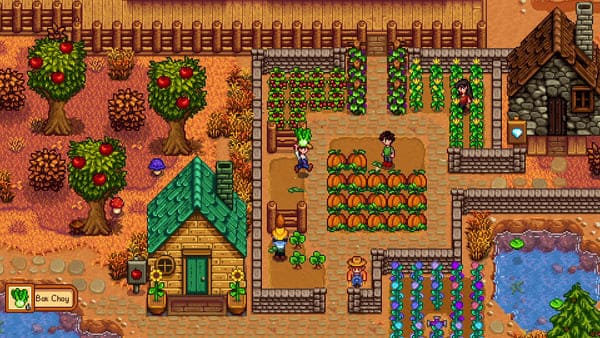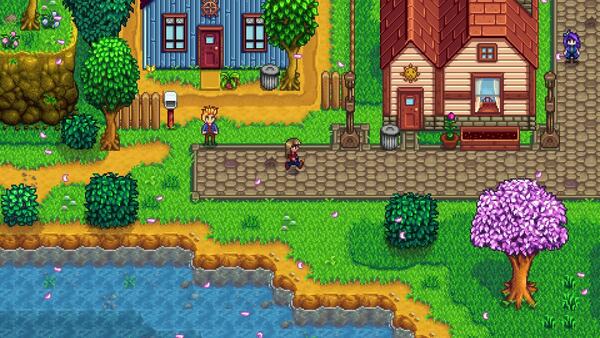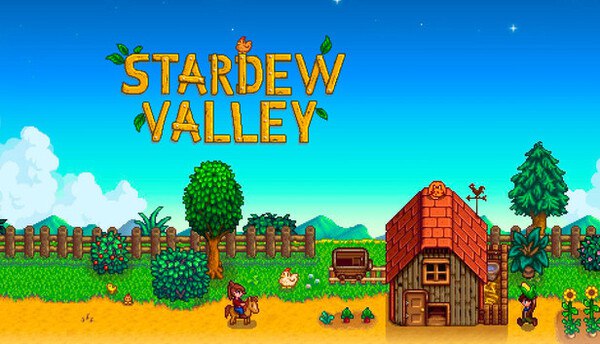Advertisement
Popular Now
In the whimsical world of Stardew Valley, where players cultivate their farms, form relationships, and explore the mysteries of Pelican Town, one factor significantly influences overall success: crop quality. While many players focus solely on maximizing yield and profit, the intricacies of crop quality offer a unique challenge that intertwines with game mechanics, resource management, and community engagement. This article will delve deep into the importance of crop quality in Stardew Valley, exploring its mechanics, impacts, and strategies for improvement. By the end, players will understand how to harness crop quality to elevate their farming experience and achieve sustainable success.
 Crop quality is a vital aspect of farming in Stardew Valley, determining not only the selling price of produce but also how it can be utilized in cooking, crafting, and community contributions.
Crop quality is a vital aspect of farming in Stardew Valley, determining not only the selling price of produce but also how it can be utilized in cooking, crafting, and community contributions.

 Players can craft fertilizers using various resources, making it essential to gather ingredients to maintain a steady supply.
Players can craft fertilizers using various resources, making it essential to gather ingredients to maintain a steady supply.
 Watering not only influences growth speed but also directly affects crop quality. Consistent and adequate watering can lead to improved harvests.
Watering not only influences growth speed but also directly affects crop quality. Consistent and adequate watering can lead to improved harvests.
 With each level gained, players receive a boost in the likelihood of producing higher-quality crops. This mechanic encourages continuous engagement with farming.
With each level gained, players receive a boost in the likelihood of producing higher-quality crops. This mechanic encourages continuous engagement with farming.
Understanding Crop Quality
 Crop quality is a vital aspect of farming in Stardew Valley, determining not only the selling price of produce but also how it can be utilized in cooking, crafting, and community contributions.
Crop quality is a vital aspect of farming in Stardew Valley, determining not only the selling price of produce but also how it can be utilized in cooking, crafting, and community contributions.
What Determines Crop Quality?
Several factors influence the quality of crops, including the type of crop, the conditions under which they are grown, and the care provided during their growth cycle.Key Factors Influencing Crop Quality
- Growth Conditions: Soil quality, watering routines, and the use of fertilizers play a significant role.
- Crop Type: Each crop has its inherent quality potential, ranging from normal to iridium quality.
- Farming Level: As players progress in farming skill, they increase the chances of higher-quality crops.
The Quality Scale: Normal to Iridium
Crops in Stardew Valley can be categorized into four quality levels: normal, silver, gold, and iridium. Each level has a distinct selling price and utility in crafting.Breakdown of Quality Levels

- Normal: Base quality with the lowest selling price.
- Silver: Slightly better than normal, providing a modest increase in price.
- Gold: Offers a significant boost in selling price and is highly sought after in the market.
- Iridium: The highest quality, yielding the maximum profit and often required for high-level recipes or community bundles.
The Role of Fertilizers in Improving Quality
Fertilizers are crucial for enhancing crop quality, providing players with the means to manipulate the growth conditions of their produce.Types of Fertilizers
Stardew Valley features a variety of fertilizers, each with different benefits and costs.Common Fertilizers
- Basic Fertilizer: Increases the chance of growing silver-quality crops.
- Quality Fertilizer: Further boosts the chances of producing gold-quality crops.
- Deluxe Fertilizer: Offers the highest chance of yielding iridium-quality crops.
Crafting and Using Fertilizers
 Players can craft fertilizers using various resources, making it essential to gather ingredients to maintain a steady supply.
Players can craft fertilizers using various resources, making it essential to gather ingredients to maintain a steady supply.
Crafting Process
- Basic Fertilizer: Requires fish and fiber.
- Quality Fertilizer: Made from fish, sap, and a crafting level of 1.
- Deluxe Fertilizer: Crafted from fish, sap, and a crafting level of 9.
Watering: A Crucial Component for Crop Quality
Proper watering routines are essential for achieving high-quality crops, as plants require consistent moisture to thrive.The Watering Mechanism
Crops in Stardew Valley require daily watering to grow properly, with different watering techniques impacting quality.Manual vs. Automated Watering
- Manual Watering: While cost-effective, it can be time-consuming and may lead to missed days if players forget to water their crops.
- Sprinklers: Investing in sprinklers allows players to automate the watering process, ensuring crops receive adequate moisture.
The Role of Watering in Crop Quality
 Watering not only influences growth speed but also directly affects crop quality. Consistent and adequate watering can lead to improved harvests.
Watering not only influences growth speed but also directly affects crop quality. Consistent and adequate watering can lead to improved harvests.
Effects of Inconsistent Watering
- Missed Days: Neglecting to water crops can result in reduced quality.
- Drought Stress: Under-watered plants may produce lower quality crops or fail to produce entirely.
The Influence of Farming Level on Crop Quality
As players progress in Stardew Valley, their farming level plays a significant role in determining crop quality.Gaining Experience
Players earn experience points through various farming activities, such as planting, watering, and harvesting crops. Higher farming levels unlock better quality crops and crafting recipes.Leveling Up Farming Skills
- Experience from Planting: Each crop planted contributes to farming experience.
- Harvesting Quality Crops: Successfully harvesting higher-quality crops grants more experience points.
Quality Crop Chance Increases
 With each level gained, players receive a boost in the likelihood of producing higher-quality crops. This mechanic encourages continuous engagement with farming.
With each level gained, players receive a boost in the likelihood of producing higher-quality crops. This mechanic encourages continuous engagement with farming.
Farming Skill Levels
- Level 1: Basic crops; no bonus to quality.
- Level 5: Choice between Rancher or Gatherer professions, both offering increased quality opportunities.
- Level 10: Advanced professions that significantly enhance crop quality.
Seasonal Changes and Their Impact on Crop Quality
Seasons in Stardew Valley dictate what crops can be planted and influence their quality.Spring: The Season of New Beginnings
Spring offers a wide variety of crops, many of which can be enhanced through fertilizers and careful watering.Key Spring Crops
- Cauliflower: Requires 12 days to grow, with a chance to produce high-quality crops.
- Potatoes: Have a shorter growth time and can yield multiple harvests.
Summer: Peak Quality Potential
Summer presents opportunities for high-value crops, but quality remains a priority.Notable Summer Crops
- Blueberries: These produce multiple harvests, making quality even more crucial.
- Melons: While they take longer to grow, they can yield exceptional profits when produced at higher quality levels.
Fall: The Time for Harvest
Fall is often seen as the culmination of farming efforts, offering high-value crops that require careful management.Prime Fall Crops
- Pumpkins: With the potential for iridium quality, pumpkins can be a major profit source.
- Cranberries: Their multi-harvest capability makes them ideal for maximizing quality.
Winter: A Time for Reflection and Planning
While most crops cannot be grown in winter, this season is crucial for planning future quality improvements.Strategies for Winter
- Greenhouse Preparation: Utilizing the greenhouse allows for year-round crop quality management.
- Resource Gathering: Winter is an excellent time to gather resources for crafting fertilizers and upgrading tools.
Community Contributions: The Importance of Quality Crops
Crop quality also plays a significant role in community contributions, impacting relationships and reputation in Pelican Town.Community Center Bundles
Completing community bundles often requires high-quality crops, making crop quality a crucial aspect of gameplay.Key Bundles Requiring Quality Crops
- Crop Bundle: Requires a variety of crops, often with quality restrictions.
- Artisan Bundle: Some bundles require artisan goods made from high-quality crops.
Gifts and Relationships
Gifting high-quality crops to townsfolk can significantly boost friendship levels, unlocking unique dialogue and events.Gift Preferences
- Best Gifts: Many NPCs prefer iridium-quality crops, offering greater friendship bonuses.
- Caring for NPCs: Building relationships through gifting can lead to valuable rewards and community events.
Challenges in Achieving High-Quality Crops
While striving for high-quality crops, players may encounter several challenges that require thoughtful solutions.Resource Management
Managing resources effectively is essential for maintaining crop quality. Players must balance their time and materials to avoid setbacks.Common Resource Challenges
- Ingredient Scarcity: Gathering enough materials for fertilizers can become a struggle.
- Tool Upgrades: Upgrading tools can take time and resources, impacting crop care.
Seasonal Limitations
Each season presents its own limitations, influencing crop choices and quality outcomes.Seasonal Crop Limitations
- Crop Availability: Certain crops are only available during specific seasons, impacting planning.
- Farming Time Constraints: The short window of each season requires players to make quick, strategic decisions.























